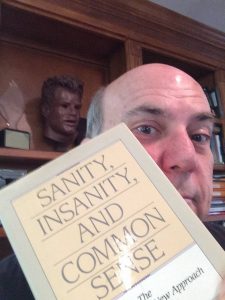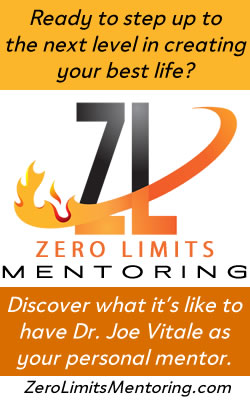Tag: psychology
The Courage To Be Disliked
Last month I was lucky enough to be given an advanced prepublication review copy of The Courage to Be Disliked by Ichiro Kishimi and Fumitake Koga (Atria Books, May 2018 release).
I say “lucky” because the book changed my life.
I had never heard of it before. But the book is a runaway bestseller in Japan. It sold 3.5 million copies in Asia.
- A million copies sold of any book is miraculous.
- Over three million copies sold in Japan alone is staggering.
The book is a dialogue between a student and a philosopher.
The messages are potent.
Most of the material stems from the work of psychologist Alfred Adler. As much as I’ve read in psychology, I wasn’t familiar with Adler.
I am now.
Adler (1870-1937) was an Austrain physician, psychotherapist, and the founder of Adlerian psychology, sometimes called Individual Psychology.
Around 1907 Adler and Freud, along with Rudolf Reitler and Wilhelm Stekel, began meeting weekly in a type of early mastermind. Their “Wednesday Night Meetings” eventually grew into the birth of the psychoanalytic movement.
Freud and Adler did not agree and went separate ways. I’m currently collecting and reading Adler’s works, such as Understanding Human Nature (1927) and The Science of Living (1929).
While I am digging into the original words of Adler, I find The Courage To Be Disliked an easier approach to understanding him.
Here’s why…
The Courage to Be Disliked is a refreshing stir for self courage.
Rather than giving away your power to circumstances, you use your power for choice.
The book explains etiology, which is the idea of cause and effect, versus teleology, which is the idea of meaning and choice.
“We are not determined by our experiences, but are self-determined by the meaning we give to them…” – Alfred Adler
In other words, many schools of thought (including Freud’s) say you are the product of your past and/or your environment.
That is cause and effect thinking, or etiology.
But Adler’s approach is to say you can create your life from new meaning and choice, which is teleology.
Obviously, the latter is more empowering and freeing.
The latter doesn’t need anything outside of you to change for you to change.
You can change with a decision.
The Adler way is not one of victimhood but of empowerment.
For example, rather than saying you are the way you are due to the circumstances of your childhood, or current circumstances, you instead choose to create how you want to be from goals selected out of this moment.
- The past has no hold over you.
- Environment has no hold over you.
- Others have no hold over you.
At first glance, the concepts in The Courage to Be Disliked could seem daunting and unrealistic.
But as I kept reading the book, and following the concepts being explained, I realized that this book is a manual for awakening.
There are too many concepts to repeat here, but one crucial one is this:
“All problems are interpersonal relationship problems.”
Let that sink in.
“All problems are interpersonal relationship problems.”
The idea (simplified) is that you may sometimes try to please others, which is giving away your power to others.
You can’t easily be happy if you are waiting on another’s approval.
When you choose yourself, you are free.
You may be disliked; but you are free.
But here’s an even deeper insight…
An advanced insight is this: you have an interpersonal problem with someone in order to justify something you don’t want to do.
In short, you created the need for an excuse and then created the interpersonal problem to rationalize the excuse.
The problem or person didn’t come first; your need for a way out did.
This is similar to my own observation:
“The meaning you give an event is the belief that attracted it.”
You don’t realize it, but it’s actually you and your meaning/beliefs creating your life.
This completely transforms the idea of problems with other people.
You created them!
The Courage To Be Disliked explains all of this, and more, in an easy to read style.
It’s simply a conversation.
But “the student” is asking what you would probably ask.
And “the philosopher” is responding as might Socrates, or Adler himself.
Along the way you get “aha” moments of insights.
For example, learning to separate tasks is important.
That means learning to understand what is under your task to do, and what is for others to do.
- Wanting someone to like you isn’t your task. It’s theirs.
- Wanting a child to clean his or her room isn’t your task. It’s the child’s.
- Wanting to be recognized for success isn’t your task. It’s the public’s.
Knowing this “task separation” gives you freedom.
“We cannot think, feel, will, or act without the perception of some goal.” – Alfred Adler
I’ve often referred to people trying to give me their task as them trying to give me their monkey.
They don’t want to care for “the monkey” so they try to pass it off to me.
But I have enough monkeys.
Knowing that I don’t want another monkey, and that their task isn’t mine to do, makes it easier for me to have a boundary and maintain it for my own self-care.
As a result, I can be free.
Here’s a recent example:
Jaime Vendera is a vocal coach. A terrific one. He’s written Raise Your Voice and The Ultimate Breathing Workout. He’s helped lots of singers, including me.
He wrote to me one day saying he had an idea for a book I could write. He suggested it could be about mindset for musicians.
While I liked the idea, I sensed he was passing a monkey to me.
So I wrote back, saying it was his idea, or his task, so he should write it.
To my surprise, and his credit, he took the challenge.
He completely wrote the book, showed it to me, and I added some content, and a subtitle to it.
We are now coauthors of the book, Mind Over Music: Break Through the Blocks to Get Into the Studio and Onto the Stage. (It’ll be out next month.)
Instead of my taking on his task, I simply kept my boundary and supported him.
The result was a win-win for both of us.
Do you see how this works?
The Courage to Be Disliked contains far more wisdom, theory, and technique than I could possibly relay in this article.
But I don’t want you to settle for this post.
I want you to read the book.
Whether you do or not, of course, is your task, not mine.
Ao Akua,
PS – The Courage To Be Disliked will be in stores May 8, 2018. You can order it in print, for your Kindle reader, or on audio right now at Amazon: https://smile.amazon.com/Courage-Be-Disliked-Phenomenon-Happiness/dp/1501197274/
Your Reality vs Mine
Being a student of psychology for decades, I’m still reading anything I can find, old or new, to help me better understand myself and others.
Most recently I devoured Sanity, Insanity, and Common Sense, a 1987 book by Rick Suarez, Roger Mills, and Darlene Stewart.
The book describes a “Psychology of Mind” that I love.
Today you can easily find books echoing the principles in Sanity, Insanity, and Common Sense but I love the original for more or less introducing the ideas to the mental health community back in the 1980s.
In short, the four key points in the book (in my own words) are these:
1. Thought shapes reality.
2. Each person lives in a separate reality.
3. There are levels of consciousness.
4. Feelings and emotions reveal the level of consciousness.
By themselves, standing stark naked on the page, they may not seem like much.
You may have even heard of them before.
But let’s go deeper:
1. Thought shapes reality.
You know this one. You’ve heard it from me and other authors. But to bring it alive, you have to realize that your thoughts are creating your reality right now. No matter what your explanation is for your life, it is being created mostly by thought. Yes, you have behaviors and actions, but they are first triggered by thoughts. Thought comes first. Thought shapes reality. Thought is where you change reality.
2. Each person lives in a separate reality.
This was a major a-ha insight for me. The authors prove that each person lives in a perceived reality created by their unique set of thoughts. Their perception creates their version of reality. You do it. I do it. We all do it. But virtually no one is aware that they do it. Understanding that the people you deal with aren’t thinking like you, and they in fact view the world differently than you do, explains the challenge we have in communicating with and understanding each other. You are from one planet; I am from another. Now, let’s talk. See the problem?
3. There are levels of consciousness.
More recent authors, such as the late David Hawkins, have explained that there are levels of awareness or consciousness. Lower levels are where you’ll find revenge, greed, depression. Higher levels are where you experience love, compassion, understanding. Just knowing there are levels can help you understand your life in any moment. If you are feeling down, you need to think-do-be something up the ladder of consciousness. It may be as simple as taking a nap. It may be a need for a new mental frame for what you are experiencing. The idea, of course, is to live from higher states of consciousness. You’ll be happier there. And so will everyone around you.
4. Feelings and emotions reveal the level of consciousness.
I loved this insight, as well. It makes it easier to spot your own level of consciousness. If you are in a bad mood, or feeling angry or insecure, you have dropped to a lower level. If you feel happy, loving, friendly, then you went higher. In other words, your very feelings are the indicators of your current spot on the levels of consciousness. Your thought created those feelings, but you can use the feelings/emotions to hone in on the originating thought that you might now need to change.
As Sanity, Insanity, and Common Sense explained, awareness alone is a profound tool for awakening and understanding, and for greater motivation and productivity.
Because the 1987 book was written for mental health professionals, the authors used examples from management, therapy, hospitals and other organizations to show that old ways of trying to change will always fail because they usually don’t take into account the Psychology of Mind.
What’s needed at home and at work is awareness of how thought works, how it creates separate realities in different people, how our emotions reveal our place in consciousness, and more.
One thing to keep in mind is that when you (or anyone) drops into a lower level of consciousness, the key feeling you experience is insecurity.
And when you (or anyone) feel insecure, you won’t think or act clearly.
At that point, you will be unhappy (though you may call it sad, mad, or any other word to describe it).
And this is why the book is subtitled “The Groundbreaking New Approach to Happiness.”
It’s a guide to mental health, and mental health is described as a higher consciousness state of happiness.
A few gems from the book to chew on:
“The fact is that in separate realities, everyone is right and everyone is telling the truth as they see it.”
“Stress is a byproduct of thinking; it is not inherent in situations or circumstances.”
“A reality is an apparency. It is how something appears to be.”
So, your reality is different because your thoughts are different.
And you can use your feelings to reveal your thoughts.
In other words, if you feel “low” or “off,” it simply tips your place in thought.
You’ve heard the answer before: change your thinking.
Or if you are frustrated by someone performing poorly at work or school or home, your understanding of their thought and their reality, can bring you more compassion and understanding in dealing with them.
And ultimately, throughout all this dance of partners in separate realities, we have to remind ourselves that the one who needs to change is YOU.
And me.
This is very similar to the theory explained in my bestselling book with Dr. Hew Len, Zero Limits, as well as the eye-opening sequel, AT Zero.
You are entirely responsible for what you perceive.
Why?
Because what you perceive is through your mindset.
You filter objective reality through your mindset/paradigm/beliefs and what you actually see is your own version of reality.
The thing is, your neighbor is doing the same thing.
And so is your boss.
And your spouse.
It takes understanding and compassion to guide ourselves through this maze, but the authors point out that when you lift your own mindset to higher consciousness, then you will more clearly see where others are, and you will more naturally influence them lovingly and organically.
I loved the book but am not asking you to go read it. (The book is now out of print, but you can find used copies on eBay and Amazon.)
Instead, absorb the four principles of the Psychology of Mind and note how you feel throughout the day.
Just stop and take stock.
What are you feeling?
Your feeling is an indicator of your state of consciousness, and your consciousness can be changed with a thought.
What do you think?
Ao Akua,
PS – I’ve written about these concepts in numerous places. You might want to check out The Awakening Course.
Flying Midgets, Burning Bras
Back in 2001 I released my magnum opus when it comes to marketing.
Titled Hypnotic Marketing, it was an e-book revealing my three-step formula for attracting more business.
It was packed with juicy stories and funny case histories, from flying midgets to burning bras, to stupid websites to outrageous ideas that worked, and more.
I just updated and released the book as a printed paperback, now more than 400 pages long, and containing zippy and zany articles as bonuses, and revealing a fourth step to the famous marketing formula.
There’s everything in this mega-book, including —
Chapter 2: How to Hypnotize the Masses with “PO” Ideas
Chapter 3: Flying Midgets and the PR Folk Hero
Chapter 4: Eight Proven Rules for Getting Publicity
Chapter 5: Pitching a Heavyweight Boxing Champion and His Sausage
Chapter 6: Show Your Bra!
Chapter 7: 21 Ways to Identify Story Ideas About You or Your Business
Chapter 8: Running Water
Chapter 9: Selling Bloody Games
Chapter 10: One of the Easiest Ways in the World to Get Publicity
Chapter 11: How to Install a “Success Wish” in Your Mind
Chapter 12: The Top Three Ways Guaranteed to ALWAYS Hypnotize the Media
Chapter 13: 10 Tips on Becoming Newsworthy from a Media Tigress
Chapter 14: The Seven Laws of Baseball’s Greatest Publicist
Chapter 15: The Psychology of Hypnotic Publicity
Chapter 16: Edgy Top Secret Ways to Absolutely Nail Media Attention
Chapter 17: How to Get Rich With P.T. Barnum’s Secret
Chapter 18: The Amazing Breakthrough Formula Called “E-DR Publicity”
Chapter 19: A New Way to Get 30 times More Replies from the Media!
Chapter 20: 14 Instant Ways to Send Out Your News
Chapter 21: Two Words that Can Get You on Virtually Any Radio or TV show
And it doesn’t stop there —
Chapter 22: Your Keys to Hypnotic Websites
Chapter 23: A Master Copywriter Reveals His Inner Secrets
Chapter 24: A Forbidden Persuasion Master Reveals His Secrets
Chapter 25: A Practical Mystic Reveals His Website Secrets
Chapter 26: Declan Dunn Shocks Me with His Website Secrets
Chapter 27: What Are the Hardest-Hitting Direct-Selling Websites Online?
Chapter 28: Some Sexy Advice from the World’s Greatest Hypnotist
Chapter 29: How to Transform a So-So Website into a Truly Hypnotic Website
Chapter 30: How An “Inspirational Folk Musician” Can Create a Hypnotic Website
Chapter 31: What You Can Learn from This Really Stupid Website
And wait! There’s more –
Chapter 32: The Secret Nobody Wants You to Know About Making Money Online
Chapter 33: How a Famous Street Magician Can Help You Create Hypnotic E-mails
Chapter 34: How to Create E-mails that Secretly Seduce Your Readers
Chapter 35: The Five Best Ways to Create Hypnotic Email Openers
Chapter 36: “How Can the Right Question Bring in 317% More Orders?”
Chapter 37: E-mail Sales Letter Samples that are Making Me Rich
Chapter 38: A Little Known Secret for Doubling Responses to Your E-Offers
Chapter 39: How to Make Even More Money With This Unusual E-mail Secret
Chapter 40: What are Five Ways to Get People to Open Your E-mail?
Chapter 41: A Truly “Killer” Hypnotic Sales Letter Used Online AND Off
Chapter 42: The World’s Most Unusual Way to Strengthen Your Hypnotic Writing
And it doesn’t even stop there, as the rest of the book is packed with info on social media marketing to “dangerous selling” to the best books on marketing, and more.
The famous three-step formula now contains a fourth step, on social media marketing.
I just read my own book as a printed paperback and loved it.
I’m not the only one to love it, of course:
“It’s Like Selling Fort Knox At A Discount”
|
“Joe, you’ve written a masterpiece. Condensing the formula for getting rich in only 79 days into three simple steps anyone can follow is brilliant! As with everything you write, ‘Hypnotic Marketing’ is crammed full of true-to-life, straight forward ways to start a welcome flow of cash into anyone’s bank account.
We all thank you for making this gem available. But, come on, Joe…that price. You’ve got to be kidding! Why would you give away so much for so little? It’s like selling Fort Knox at a discount!”
— Dr. Paul Hartunian, Author, How to Get a Million Dollars in Publicity FREE!, PrProfits.com/ezine/
“I Learned Something New On Every Page”
“Joe Vitale hypnotized me today! He did it with ‘Hypnotic Marketing,’ which I found impossible to stop reading. I learned something new on every page, and I’ve been learning about marketing since l958. Now, I can only shudder for those poor souls who haven’t yet learned what Joe has to teach. Not only does he enlighten, but he does it in such a warm and engaging way, that you cannot help but complete his book with a smile in your heart and dollar signs on your mind. Thank you, Joe, for a mighty contribution to the world of marketing.” — the late Jay Conrad Levinson, Author, Guerrilla Marketing series, JayConradLevinson.com |
If you are at all interested in marketing, online or off, publicity, websites that sell, hypnotic writing and the like, you must have this book.
It’s at Amazon as a printed book at http://www.amazon.com/Hypnotic-Marketing-Collection-Successful-Techniques/dp/1512155233/
It’s online as an e-book at http://www.hypnoticmarketing.com
Go get it.
Ao Akua,
PS – Long before I became a Law of Attraction teacher and author of such self-help spiritual books as The Attractor Factor and Zero Limits, I was known as a hypnotic writer (I wrote Hypnotic Writing, Buying Trances, There’s A Customer Born Every Minute, and many more books) and marketing specialist (having clients like The Red Cross to small and large companies to hundreds of authors and speakers). The best of that side of me is in my famous book, Hypnotic Marketing. I’m proud of that book and urge you to check it out. It’s at Amazon as a printed book at http://www.amazon.com/Hypnotic-Marketing-Collection-Successful-Techniques/dp/1512155233/ It’s still online as an e-book at http://www.hypnoticmarketing.com















